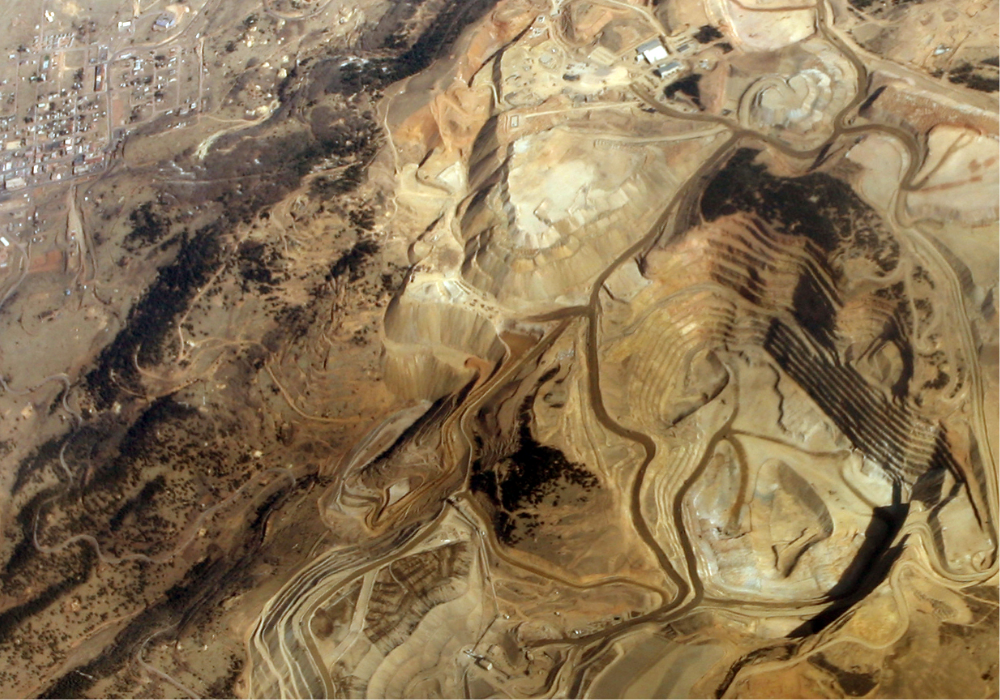
There is no doubting that 2020 has been a challenging year for a number of key sectors and the situation has been no different for the South African mining industry.
The nation’s Minerals Council admitted in May that the industry’s production is likely to fall by between 8% and 10% this year following the effects of the coronavirus pandemic.
The lockdown restrictions imposed by the South African government towards the end of March resulted in the temporary closure of the country’s mines.
But, despite all the challenges they have faced, the nation’s mining companies “remained resilient and performed on all fronts”, according to multinational accounting firm PWC’s SA Mine 2020 report.
Andries Rossouw, PwC Africa energy utilities and resources leader, said: “South Africa’s mining sector continues to be a meaningful contributor to the economy and has weathered the COVID-19 pandemic in many respects – showing good profitability and retaining strong balance sheets.
“The long-term future is unknown however as there is little consensus on how the pandemic will impact the mining industry. The pandemic highlighted the absolute need to build back better and mining will play a key role in that recovery.”
Here are the key trends highlighted in PWC’s report on the South African mining industry in 2020.
Key trends in the South African mining industry in 2020
Market capitalisation
In 2020, total market capitalisation in the South African mining industry increased to 1.280bn South African Rand ($59.7bn) from R840bn ($39.2bn) in 2019.
That marks a R439bn ($20.5bn) year-on-year increase from the previous year, which PWC said was “largely attributed to the increase in market capitalisation of companies within the gold and platinum group metal (PGM) sectors”.
Gold and PGM accounted for 80% of the market capitalisation of the companies analysed in the report this year and “continue to dominate the sector”.
Financial performance
The total revenue generated by the South African mining industry for the year ending 30 June 2020 increased by 4%.
PWC said this growth was mainly driven by PGMs, gold and iron ore, which experienced increases in revenue for the 12-month period.

PGM generated the largest portion of revenue at 28%, marking a 56% increase from the previous year, which led to that market overtaking coal for the first time since 2010.
The report notes that gold mining companies had an increase of 35% in revenue, as prices for the precious metal reached record highs this year. Revenue for the “other mining” segments increased by 7%.
Production
Production fell by 8% year-on-year at South Africa’s mines, with a 44% decrease in output recorded in April as a result of the pandemic.
The analysis notes that the most significant drop was due to reductions in gold, diamonds and PGM outputs.
But production levels increased in May following the easing of lockdown restrictions and the reopening of the nation’s mines.
An opportunity to “build back better”
The report highlights how companies and investors have “increasingly been recognising the importance” of prioritising environmental, social and governance (ESG) matters on the corporate agenda.
PWC identified four key ESG focus areas that should be top of mind for any company that wants to build back better and ensure a just transition to a new economy. Those areas are supply chain resilience, measuring impact, climate-related risks, and resource efficiency.
The analysis notes how the pandemic has highlighted the “absolute need” to “build back better” and claims mining will “play a key role in that recovery”.

With that in mind, PWC said it is therefore unfortunate that despite the increased profitability, capital expenditure “only increased marginally”.
It added that while a cautious approach is understandable, impediments to investment need to be removed.
The report claims “liberalisation of the energy market” to ensure reliable and cost competitive electricity is “essential” for mining and potential beneficiation opportunities – and states that hydrogen can play a “transformative role” in this regard.
The case for hydrogen
Hydrogen has been a hot topic of conversation for a while in the South African mining industry and PWC said there have been “several transport initiatives” in the sector that are heavily focused on the use of PGMs in the catalysts of fuel cells.
But the report notes that although these pilot projects are a “good start” towards bringing hydrogen technology into mining, the focus of their application is “quite narrow”, as they are mainly focusing on decarbonising the transport segment of a mining operation.
It claims there is a far bigger opportunity to leverage the cross-sector benefits of hydrogen on a microgrid scale, which would create a “fully green and resilient mining operation”.
The analysis states that now may be the opportune time for mining companies to “consider the vast benefits of hydrogen”, with the costs associated to renewable hydrogen production expected to fall by as much as 60% across the next decade.
Creating value for stakeholders
PWC said the mining industry is continuing to add significant value to the country and its people.
It highlights how mines were requested to invest even more in their local communities and support structures as a result of the pandemic.
The report notes that as is reported in company value added statements, employees are continuing to take the major share of value added at 38%, followed by government through direct taxes (11%), employee taxes (7%) and royalties (3%).



